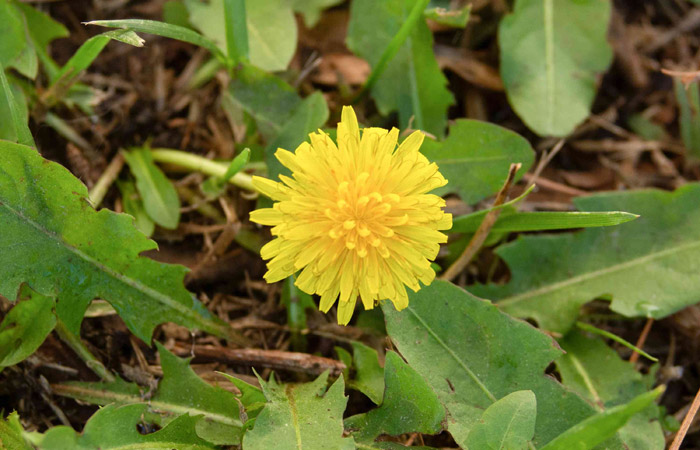We will know spring is really here when we see the first dandelion put forth its optimistic bright yellow flower. Dandelions and other perennial plants always bloom at the same time each year. The time however is called phenological time. It is a combination of the time and the temperature. We typically measure phenological time as growing degree days (GDD) or heat units. GDD are calculated by accumulating or adding up the average temperature each day. For example, if it is plus 10 degrees as a high and 0 degrees as the low, the average temperature is 5 degrees. If you have three days in a row with those temperatures, you will accumulate 15 growing degree days.
Back to the dandelion. It always takes 225 growing degree days for the first flower to appear. When the first dandelion flower appears, we know exactly how warm it has been in that location. Each location is different. The south side of a building will have more GDD accumulate than an open field.
We can measure the progression of spring by watching perennial plants develop. It takes 205 GDD for the poplar trees in the bush to turn a slight green. My grandfather told me that he would not seed before he saw that slight green tinge on the poplar trees. I am not sure if he knew, but the green tinge in the poplars indicated that the soil was warm enough to plant crops, around 5-10 degrees at seeding depth.
It takes 300 GDD for the ornamental crab in your front yard to first flower. Another 20 GDD will have your saskatoons flowering. It takes a long time for lilacs to first flower: 450 GDD. If you are a farmer then it will also be useful to know that when the lilac first flowers, one half of the wild oats in your field have emerged. If you have not yet planted, then you can destroy that 50% of your wild oats with your seeding pass.
My colleague, Dr. Rene Van Acker, studied when weeds emerge in the field. It is useful to know so that you can manage them properly. Stinkweed is the first to “emerge” or turn green because it establishes itself the previous fall. Wild mustard will emerge very early, followed by the wild oats. Green foxtail is quite late, but red root pigweed is the last to emerge in any field. Our cereal crops and canola also germinate well in cold soils, anything above 5 degrees. Corn and soybeans must be planted later because they do not do well in cold soil. They need at least 10 degrees in the soil to start properly.
If you want to see if the climate is changing here, growing degree days (GDD) is one of the best ways of doing it. If you are lucky, then you or someone in your family has a journal where they have been tracking when the green tinge on poplars is first noticed for the last 100 years. You can continue that tracking to see if it is steadily changing or just jumping around from year to year which is quite typical. There is still time to start this spring.
I am hoping that with the late warmup this spring that when the fruit trees, like apple, saskatoon, haskap, and others do bloom that we will not have a killing frost to reduce the fruit set. May your farming and gardening experience this year be one to be remembered for the great year it will be.




